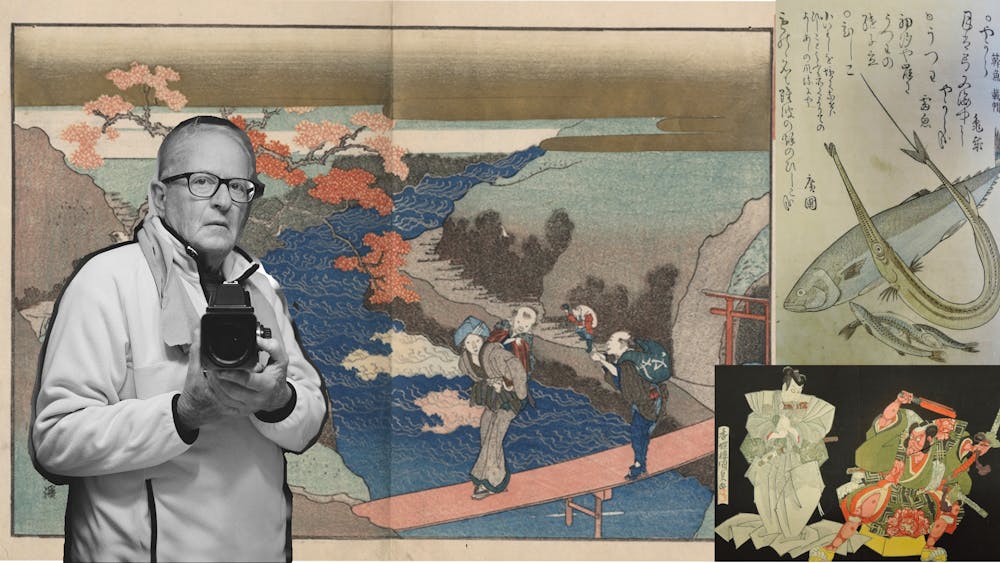Between Van Pelt’s endless stacks and tables full of stressed–out students exists the Kislak Center for Special Collections, Rare Books and Manuscripts. The Kislak Center is now exhibiting photographs by Arthur Tress in dialogue with Japanese illustrated books from his personal collection. The special exhibition, which opened on Sept. 29, will remain on view through the end of the semester on Dec. 16. Visitors can find the show, curated in collaboration with faculty and graduate students, within the Goldstein Family Gallery.
At the advice of professor Julie Nelson Davis, Art History Department Chair and 18th–19th century Japanese art specialist, Tress donated his collection of Japanese illustrated books to the University of Pennsylvania Libraries in 2018. This collection consists of over 1,400 titles as well as thousands of volumes of Japanese illustrated books, manuscripts, and more, dating anywhere from the late 17th century to the 1930s. It’s a truly genre–spanning collection, containing books on subjects including, but not limited to, kimono design, theater, and even erotica. Famous titles include Shusui’s Tales of Ise (1767), Rinsho’s Book of Caricatures (1770), and works by notable artists including Utagawa Kunisada, Katsushika Hokusai, and more.
Beyond his status as an impressive collector, Tress is one of the most important contemporary photographers of our time. His work is housed in museums across the country, including the Los Angeles County Museum of Art, the Whitney Museum of American Art, the Art Institute of Chicago. His image books, most notably Arthur Tress: The Dream Collector (1972), fuse and juxtapose realism and surrealism, innovatively engaging with the photographic tradition. “On an artist’s shoestring budget,” as Tress says, he began amassing his collection of Japanese illustrated books nearly 60 years ago, when traveling in Kyoto. It has since become one of the most notable collections of such works, now gracing the Kislak Center for the Penn community to study and enjoy.
The exhibition was curated by graduate students from two seminar classes as well as an independent study spearheaded by Davis in fall 2019, spring 2020, and spring 2022, respectively. Davis describes encouraging her students to think through the connections between Tress’ photographs and collected artifacts in her courses: “A lot of his photographs are responses to themes that he sees in the books, and some of them aren’t. But because the books were selected by him, I threw out this challenge to students. … The students were so open–minded and creative that they came up with totally different approaches than I would.”
As a result of the hard work of librarians, professor of Japanese Studies Linda Chance, roughly 20 students of all academic backgrounds, and Davis herself, the exhibition was born. It contains a variety of glass cases, touching on topics including environment, embodiment, calligraphy, and more.
According to Davis, the central goal of the exhibition was to give students the opportunity to be curators. “Wherever they go on in their lives after this, it’s something really cool that they got to do,” she says. Working directly with such prized objects in the history of both Japanese art and contemporary photography is an unparalleled experience that cannot be easily replicated. Davis encourages students to take advantage of the plentiful offer of classes that allow hands–on experience with artifacts like Tress’ books.
In short, the exhibition is far more than a celebration of Tress as collector and photographer: It’s a commemoration of the exceptional educational opportunities at Penn. While the show will only stay in the Goldstein Family Gallery for a little while longer, the collection will remain in the archive and has been completely digitized so that it can be accessed outside the library’s walls. It’s Davis’ hope that future student–curated exhibitions will return to the Kislak Center and enjoy as much success as this one.







